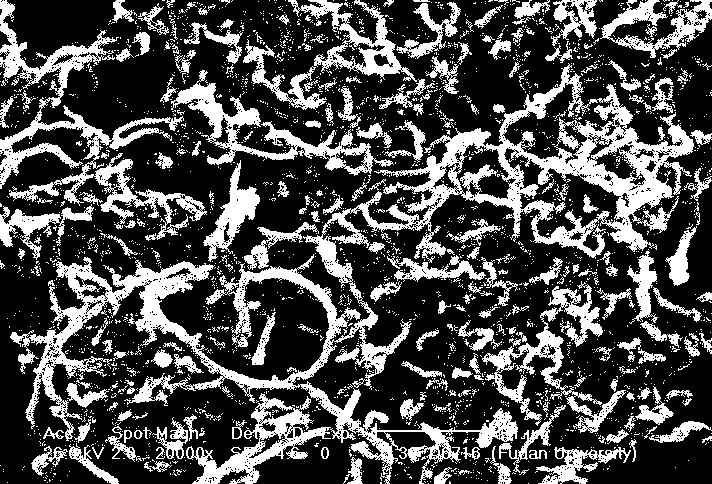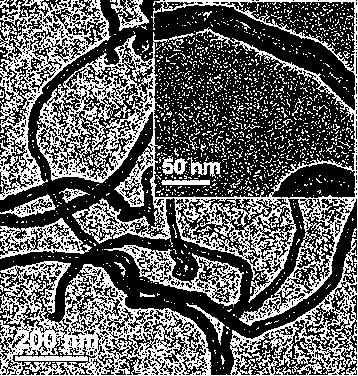Synthetic method and application of polydopamine-modified carbon nanotube composite material
A technology of carbon nanotubes and composite materials, applied in the analysis of materials, material analysis by electromagnetic means, instruments, etc., can solve the problems of MALDI-MS signal instability, uneven carbon nanotubes, and inability to disperse uniformly, achieving excellent results Environmental stability and biocompatibility, good biocompatibility, low cost effect
- Summary
- Abstract
- Description
- Claims
- Application Information
AI Technical Summary
Problems solved by technology
Method used
Image
Examples
Embodiment 1
[0027] Synthesis of polydopamine-modified carbon nanotube composites
[0028] (1) Disperse 10mg of carbon nanotubes in 40ml of aqueous solution containing 40mg of dopamine, and sonicate for 30 minutes.
[0029] (2) Under continuous magnetic stirring, quickly add 10ml of tris buffer solution (10mM, pH 8.5) to the product obtained in step (1).
[0030] (3) Continue mechanical stirring at room temperature for 10 hours.
[0031] (4) Wash the product three times each with deionized water and ethanol, and centrifuge.
[0032] (5) Dry in a vacuum oven at 50°C.
[0033] figure 1 Scanning electron micrographs of carbon nanotubes; figure 2 It is a scanning electron micrograph of the carbon nanotube composite material of the surface-modified polydopamine obtained in Example 1; image 3 is a transmission electron micrograph of carbon nanotubes; Figure 4 It is a transmission electron micrograph of the carbon nanotube composite material of the surface-modified polydopamine obtained...
Embodiment 2
[0034] Example 2: Carbon nanotube composites as substrates for high-throughput matrix-assisted laser desorption ionization mass spectrometry analysis of small metabolites
[0035] (1) Sample preparation: prepare 1 mg / mL suspensions of carbon nanotubes and carbon nanotube composite materials respectively, the solvent ratio is water: ethanol = 1:1 (v / v), and sonicate. The metabolites and small molecular compounds to be detected are all accurately weighed and prepared into a 0.1 mg / ml solution. Among them, sucrose, glucose, histidine, threonine and methionine are dissolved in water, and stearic acid and arachidic acid are dissolved in a mixed solution of water and ethanol (volume ratio is 1:1).
[0036] (2) Spot target: pipette 1 μL of carbon nanotubes and carbon nanotube composites on the MALDI target plate, and place them in the air at room temperature to dry naturally to form a thin matrix layer; take 1 μL of the analyte solution and drop it on the matrix layer and let it dry...
PUM
 Login to View More
Login to View More Abstract
Description
Claims
Application Information
 Login to View More
Login to View More - R&D
- Intellectual Property
- Life Sciences
- Materials
- Tech Scout
- Unparalleled Data Quality
- Higher Quality Content
- 60% Fewer Hallucinations
Browse by: Latest US Patents, China's latest patents, Technical Efficacy Thesaurus, Application Domain, Technology Topic, Popular Technical Reports.
© 2025 PatSnap. All rights reserved.Legal|Privacy policy|Modern Slavery Act Transparency Statement|Sitemap|About US| Contact US: help@patsnap.com



